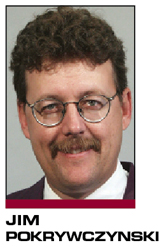The new option for viewers to choose from four March Madness games they wanted to watch on four different channels simultaneously excited and empowered fans watching on television. But what did it do for the advertisers running expensive, six-figure priced spots during the exact moments when viewers, armed with their remote controls, were most likely to switch channels to another game?
I asked that question while I sat in my living room during Marquette University’s spring break with remote at the ready, switching among the four channels in high definition at a dizzying rate. So dizzying a pace, in fact, that I chased most of the rest of the household out of the room, even the dog. The ability to view all 67 games during the three-week tournament was too attractive to watch television the way I normally do. Nor, I suspected, did others watch in the normal fashion.
When we returned from spring break and after teams had been whittled down to the Sweet 16, I asked one of my classes of about 75 students how they watched the NCAA men’s basketball tournament. This group was particularly relevant, since two of their classmates were on the Marquette team that won two games during the first weekend and were one of the Sweet 16 teams. Although about 20 of them could not contribute to the discussion because they watched little or none of the games, at least 50 did. These college-aged viewers watched an average of 12.3 hours of games during the first weekend (out of a possible 48 hours). About 60 percent of them had control of the remote, so their exposure and recall of ads during the viewing was particularly insightful.
When asked, without hints or aids, what ads they could recall seeing specifically while watching March Madness, between two and three ads, on average, could be recalled. Realizing that we were now about 48 hours removed from the last exposure to games when these questions were posed, results compare favorably to industry findings of one in five people recalling a single commercial within 24 hours of viewing. Testing their recall with the aid of a list of seven possible advertisers during the games, the average number of advertisers remembered accurately increased by one.
So my concerns for advertisers who have paid healthy sums to advertise during the games may be misguided. Given the need for the networks involved, CBS and Turner, to start recouping the almost $1 billion annual rights to air the games this way, it behooves them to understand how viewing changed this year. Some students reported that they watched the games on multiple TVs in their homes or at restaurants/bars. This approach guaranteed advertising exposure since there was no need for channel surfing. A few other students reported watching on mobile devices or laptops, where commercials either didn’t exist or were repeated ad nauseam (no pun intended).
Repetition of ads across the four networks was a good strategy to minimize the clutter of a lot of different messages competing in a tight viewing space. Since ad time was sold by a consolidated sales force of the two networks, this repetition across platforms also was logical. And it seemed to work, since I could easily recall six to seven ads and their executions, particularly the red ball of tape that’s avoided with Southwest Airlines’ frequent flyer program, the NAPA “know how” dude singing about auto parts, and the dogs hosting a Bud Light house party.
Viewers seemed to enjoy the experience as well. On a five-point scale of satisfaction, the 50 students rated the experience a 4.34, or highly satisfied.
It was enjoyable, that is, if you had control of the remote. Otherwise, those around you are likely trying to recover from the dizzying experience. Where’s my dog?
Jim Pokrywczynski (james.pokro@marquette.edu) has researched sports marketing impact and teaches advertising courses in the Diederich College of Communication at Marquette University.




